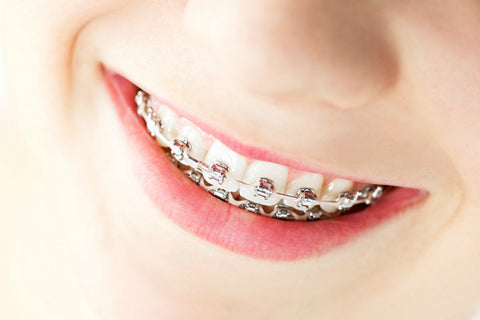What Are the Long Term Benefits of Introducing Orthodontics From an Early Age?
Although the common age to begin orthodontic treatment usually comes at the start of patients’ teenage years, introducing orthodontics from an early age could greatly reduce the need for more extensive and costly work further down the line. In fact a recent study from the American Journal of Orthodontics & Dentofacial Orthopedics, reports that many young children may benefit from orthodontic correction from as young as 6 years old.

The first permanent adult teeth will appear in children of around 6 years, just before their first baby teeth start to fall out. A lot of children will grow into their adult teeth without any trouble, however there are a few problems that can occur as the new teeth start to come through:
- Teeth can protrude out significantly, which can be exacerbated by thumb sucking from an early age
- A lack of space for the new teeth may lead to overcrowding and a misaligned bite
- There may also be too much space for the new teeth, called the ‘ugly duckling’ stage of development. Excess space usually closes with growth, though this is not necessarily always the case
- There may be a retention of the baby incisors, which can prevent the adult successors from coming through or lead them to develop over them
The study looked at the potentially damaging effects of protruding teeth in children from the ages of 6-10. It found that almost a third of children who were treated for severely protruding teeth were less likely to experience dental trauma, such as a chipped, broken, or knocked out permanent tooth.
As many children are highly active and enjoy sports or activities where there’s a higher risk of trauma, it’s advised that those in particular with severely protruding teeth, should visit their orthodontist early on. Not only will this reduce their risk of injury, it will also help to guide their teeth into a healthier position and could prevent the need for further orthodontic treatment when they’re older. In addition, in this early stage where children can be sensitive, having orthodontic treatment can help them to feel more confident in their smile as they grow.
Early Orthodontics – What Are the Options?

There are three main types of orthodontics suitable for children from a young age:
Preventative orthodontics
Preventative treatment can help avoid a malocclusion from developing due to spacing issues – tooth crowding or a misaligned bite. Here an orthodontist will be able to create enough space for the permanent teeth to come through normally. A common method is using a space maintainer.
Interceptive orthodontics
For children from the age of 6 years, visiting an orthodontist can catch problems early on before they develop into more severe dental issues. The risk of protruding teeth, especially through thumb sucking, can be corrected and reduce the need for later comprehensive orthodontic treatment. Permanent teeth can also be guided into the correct positions through tooth removal or size adjustment.
Comprehensive orthodontics
This is the typical treatment that teenagers receive to align the teeth and bite, however carrying out necessary comprehensive orthodontics from an early age, will again help to reduce the need for more complex and long-term treatment when they’re older. Children can have treatments including wearing realigning headgear or having fixed retainers to help close gaps and align their new adult teeth.
If you’d like to find out more about orthodontics for children, or to discuss your child’s orthodontic treatment, you can call the Northenden House team on 0161 9982622, or contact us here to book your initial consultation.
- Blue Horizons

